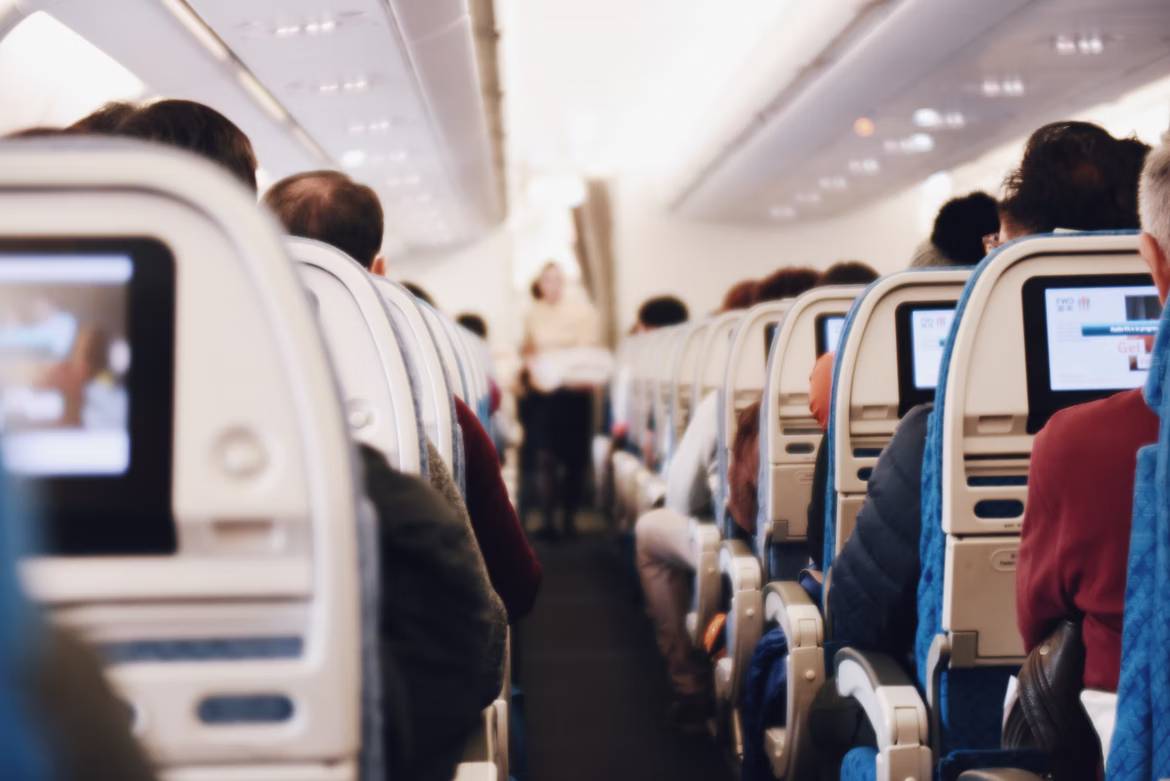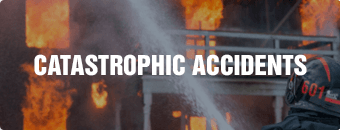- Our Firm
- Personal Injury
-
-
-
Personal Injury Lawyers
-
-
-
-
-
-
Injured in an accident? At Diamond & Diamond, our team of lawyers rely on their reputation in the field and extensive experience in personal injury to provide clients with a dedicated support system over the duration of their case.
-
-
-
-
-
HAVE YOU RECENTLY BEEN INJURED IN AN ACCIDENT?
-
-
-
- Corporate
- Class Action

Common Airplane Injuries
More than a third of people worldwide have some anxiety about air travel and flying, and about 2.5% suffer from intense fear or aerophobia. Telling them that air travel is much safer than driving an automobile is not much help because the basis of their fear is the loss of control. For example, passengers in a plane can’t exactly jump out when a fire breaks out or an engine fails like they could had they been in a car.
Of the 170 air transportation accidents in 2020, where 13 people died and 13 others were severely injured, the most common causes were a declared emergency (45%) and engine failure (12%). A declared emergency is any issue that may lead to an accident, such as forgetting to refuel the aircraft. These incidents may result from defective or malfunctioning equipment, pilot error, air traffic controller inattention, flight crew negligence, or faulty maintenance.
The safety of everyone onboard a commercial or private plane depends on several people, ranging from aircraft manufacturers to flight crew, to consistently perform their duties. Any failure in their duty of care can result in an aviation accident that can have severe repercussions on passengers.
Suppose you sustain injuries or a family member dies in a plane crash due to negligence. In that case, you might be eligible to get compensation from the responsible parties, including the airline. Given the complexity of the laws surrounding an aviation accident, you need to consult with a plane crash lawyer from Diamond & Diamond. They can help you figure out your rights to financial compensation for your losses.
Common Causes of Airplane Accidents
While most people associate airplane accidents with the aircraft plunging headlong into water or the ground because of engine failure, there are other ways you can sustain injuries, which are less catastrophic. For example, you could suffer a concussion from luggage falling from the overhead compartment because the flight attendant failed to secure it.
An airline must meet the common carrier standard in training their flight crew and attendants appropriate for the class of airplane. Airline flight attendants, particularly on commercial flights, must look out for passengers before, during, and after a flight, which is why you are constantly reminded to put up food trays and wear your seatbelts. Nevertheless, accidents, such as the following, frequently happen:
- Struck by a falling or flying object due to turbulence
- Inadequate flight attendant training for first aid treatment
- Tripping over unsecured luggage, unmarked elevations in the aisles, or uneven surfaces on the jet bridge
- Getting hit by an unsecured serving cart
- Unsanitary food or beverage handling resulting in food poisoning
- Sustaining second or third-degree burns from scalding liquids, such as coffee and tea
Aside from these in-flight dangers, you are also at the mercy of the manufacturers, flight crew, maintenance team engaged by the airline and air controllers. The following have caused many accidents and near misses in the past:
- Pilot errors
- Air traffic controller errors
- Manufacturing defects
- Mechanical problems
- Debris or obstructions on the runway
- Engine failure
- Inadequate fuel
- Fatigue
- Inebriation
Common Airplane Crash Injuries
Any mistake by the airline and other responsible parties, such as pilot error, can result in a wide range of airplane accidents. Failing to take off properly, not engaging the landing gear during the approach, or even inattentive handling of a coffee pot can lead to serious consequences for passengers. Among the common airplane crash injuries are the following:
Brain Injury
You can sustain traumatic brain injuries due to luggage falling out of an unsecured overhead bin, turbulence, or a crash. The injury can result in permanent disability in some cases, whereby you might not be able to live independently and will perhaps require lifelong care.
Spinal Cord Injury
Engine failure, collision, or a sloppy landing can compress or damage your spinal cord, causing temporary or permanent paralysis. If you are lucky, you might get the use of your limbs back after extensive physical therapy.
Soft Tissue Injury
Soft tissue injuries might not sound serious, but they can be permanent in some cases. Soft tissues involve muscles, ligaments, and tendons. The immediate effects of soft tissue injury are pain and swelling, and proper treatment may heal it over time. However, some soft tissue injuries never heal, resulting in lifelong pain and restricted mobility.
Broken Bones
Broken bones or fractures frequently result from forcible impacts, such as airplane crashes. They are extremely painful and take time to heal. You will have to significantly limit your activities, and even when fully healed, the bone never regains its former strength.
Burns
Fires often break out in plane crashes because the aircraft produces considerable friction and carries a highly combustible type of fuel. Third-degree burns often require extensive and painful surgery and skin grafts to heal. You also end up with noticeable scars, which can be unfortunate if they are on your face or neck. You could also permanently lose your hair.
Emotional Trauma
Any catastrophic accident leaves emotional scars on survivors. You might develop long-term psychological issues, such as posttraumatic stress disorder (PTSD). Even with appropriate treatment, the experience may significantly affect your ability to work and sustain healthy relationships for a long time.
Did you know that claims after an airplane accident may include negligence claims, products liability claims, and Federal Tort Claims Act violations?
Pro Tip
What to Do If You Get Injuries in an Airplane Accident
You have a right to expect a high standard of care for your personal safety when traveling in a commercial or private aircraft or even a helicopter. Air carriers often put redundant safety measures, but accidents can still happen. If you sustain serious flight injuries, you should protect your health and wellbeing in the aftermath.
Get medical attention
The first step is to get medical treatment for your injuries as soon as possible. Some injuries may be more severe than you think and only a medical professional can determine that properly. It is also an opportunity to document your injuries by an objective and qualified party, which you will need if you decide to file a personal injury lawsuit.
Consult with an airplane accident attorney
Your next step is to put your case before a Diamond & Diamond personal injury lawyer. Aviation accidents are legally complex, particularly on an international flight. Federal, provincial and international laws may apply, which can affect the time you have to file a personal injury case.
Provide information
An experienced airplane injury lawyer will need all the information you can provide when investigating the circumstances of the injury. Based on the information, your lawyer will determine if your case has merit before gathering evidence and determining liability.
You can help your lawyer by documenting the scene. Typical examples are photos of the location and videos of your conversations with the flight attendants, crew, and other passengers. For example, suppose a heavy bag falls on your head and injures you. Take pictures of the bag, your seat position, and the lock of the overhead bin (it might be defective).
Depending on the evidence, you might have a case against the flight attendant and the airline, especially if you have witnesses to the incident. Some flights have CCTV, so that will also be useful.
Calculate the damages
The amount of compensation you might receive will depend on the nature and extent of your injuries. Provide your lawyer with your medical records and access to your attending physician so that he or she can calculate the appropriate damages.
Consult with your lawyer
Consult your lawyer before making any moves or agreeing to any settlement. It is highly likely that any offer you get will not be enough to cover all your expenses. You can be sure of getting a fair settlement with Diamond & Diamond personal injury lawyers. They have a pretty good idea of how much you should get for your injuries.
Seek Legal Advice from an Experienced Personal Injury Lawyer
You have every reason to be anxious about traveling by air. Airplane crashes are rare, but airplane accidents are not. Airplane injuries range from mild to catastrophic and most of them are caused by negligence. Those injured in aviation accidents have the same rights to compensation as anyone injured while on public transportation.
Protect your rights by consulting with Diamond & Diamond personal injury lawyers for your crash or in-flight injuries. We are the best legal representatives for your lawsuit because we have many years of experience handling tort claims for airplane and other public transportation accidents.
You need to call us now at 1-800-567-HURT so we can schedule a meeting. Find out why we are your best avenue for legal representation in personal injury cases in Canada.
In Canada, personal injury cases have a statute of limitations of two years, so you need to get moving. Our initial consultation and case evaluation are free and, therefore, you have nothing to lose by reaching out to us for help.
Contact Diamond and Diamond today to learn more! If you get hurt or a family member dies in an airplane accident, get in touch with Diamond and Diamond immediately.
Need a Lawyer?
We are here 24/7 to address your case. You can speak with a lawyer to request a consultation.
1-800-567-HURTGet started with a free consultation
OUR TEAM
- Ishmeet Sandhu
- Nolan Bachmann
- Marissa Faulkner
- Annamarie Demaj
- Jeffrey Hum
- Tofunmi Adeyeye
- Alessia De Gasperis
- Amandeep Chawla
- Jeremy Tsoi
- Kimiya Razin
- Bilal Hashimy
- Shir Zisckind
- Gray Sinden
- Shelly Bard
- Christian Brown
- Daly Canie
- Tanveer Sohal
- Prianka Virdi
- Noah Brownstone
- Justin Kaminker
- Harinder S. Bhatti
- Craig Yargeau
- Kiran Birk
- Amit Singh
- Andrei Teju
- Maria Zahid
- Matthew Douglas
- Jacob Elyk
- Harry Gill
- Kristina Olivo
- Egi Bano
- Cam Woolley
- Charles Thompson
- Alexandra McCallum
- John Sime
- Allan Cocunato
- Patrick Poupore
- Erika Henderson
- Marina Korshunova
- Brandon Handelman
- Regeena Alapat
- Ryna Kim
- Natalia Poliakova
- Isaac Zisckind
- Manpreet Bhogal
- Mathura Santhirasegaram
- Nikolai Singh
- Sandra Zisckind
- Jeremy Diamond
- Michael Blois
- Darryl Singer
- Nadia Condotta
- Tinashe Madzingo
- Megan Armstrong
- Veronica D’Angelo
- Corey J. Sax
- Scott Tottle
- Steven Wilder
- TJ Gogna
- Jillian Carrington
- Joshua Himel
- Simon Diamond
- Cory Rubin
- Simon Mariani
- Brandon Greenwood
- Basil Bansal
- Nastassia Ivanova
- Tania Fleming
- George Laloshi
- Patrycja Majchrowicz
- Diana Iakossavas
- Dior Africa
- Alex Ragozzino
- Liana Saccucci
- Richard J. Chang
FAQs on Common Airplane Injuries
Can you sue an airline for emotional distress?
Yes, tort law for non-pecuniary damages is the same for all types of negligent vehicular accidents, including airplanes. Airlines have control over their property (aircraft). They may be liable for negligent accidents to passengers while onboard their planes. In Ontario, the applicable rules are in the province’s Occupiers’ Liability Act.
How do I file a case against an airline?
The process depends on whether you were on a domestic or international flight and if the airline is a Canadian entity or not. By consulting with a Diamond & Diamond personal injury lawyer, you can cut through the confusion.
Are boats safer than planes and cars?
Boats are safer than cars, but not safer than planes based on deaths per 100,000 globally per year. Boats have a rate of 6.5 deaths, while cars have a rate of 18 deaths per 100,000. Airplanes result in 1 death per 100,000.
NEED A LAWYER? CONTACT OUR TEAM TODAY
Chat Now
OR CALL NOW FOR A FREE CONSULTATION
 1-888-INFO-LAW
1-888-INFO-LAW
Head Offices
Main Offices
Barrie
Main Office
168 Bayfield Street
Calgary
Main Office
1331 Macleod Trail SE, Suite 645
Edmonton
Head Office
4246 97 Street NW, Unit 103
Halifax
Consultation Office
1701 Hollis St
London
Main Office
256 Pall Mall St, Suite 102
Oshawa
Consultation Office
50 Richmond Street E, Unit # 108 B
Ottawa
Main Office
955 Green Valley Crescent, Unit 315
Sudbury
Main Office
31 Larch Street, Unit 300
Timmins
Main Office
120 Cedar Street South, Unit 002A
Toronto
Head Office
255 Consumers Road, 5th Floor
Vancouver
Head Office
1727 West Broadway, Suite 400
Windsor
Main Office
13158 Tecumseh Rd. E. Unit 3B
Additional Areas Served
Ontario
- Ajax
- Alberta
- Aurora
- Barrie
- Belleville
- Bowmanville
- Brampton
- Brantford
- Brockville
- Bracebridge
- Bradford
- Burlington
- Burnaby
- Calgary
- Chatham
- Cobourg
- Collingwood
- Cornwall
- Durham
- Edmonton
- Elliot Lake
- Etobicoke
- Georgetown
- Guelph
- Hamilton
- Huntsville
- Kanata
- Kelowna
- Kingston
- Kitchener
- Leamington
- London
- Markham
- Milton
- Mississauga
- Muskoka
- Niagara Falls
- Newcastle
- Newmarket
- North Bay
- North York
- Oakville
- Orangeville
- Orillia
- Oshawa
- Ottawa
- Owen Sound
- Parry Sound
- Perth
- Peterborough
- Pickering
- Prince Edward County
- Richmond
- Richmond Hill
- Sault Ste Marie
- Sarnia
- Scarborough
- St. Catharines
- St. Thomas
- Stouffville
- Sudbury
- Surrey
- Thunder Bay
- Timmins
- Toronto
- Uxbridge
- Vancouver
- Wallaceburg
- Waterloo
- Welland
- Whitby
- Windsor
- Woodstock













